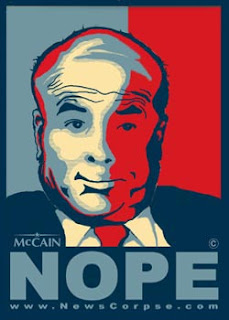The Book of Durrow, 680 A. D.
The Book of Durrow was created around 680 A. D., and came from the British Isles. It was the first Celtic book ever to be completely written and illustrated throughout the entire text. The text itself was that of the four Gospels, Matthew, Mark, Luke, and John, along with a few extra charts and tables. The Celtic style incorporates abstract design into a page layout, allowing the figures within the design to “interact” with the text. The Celtic style of design was heavily based on the concept of geometric symmetry, and incorporated artistic forms such as interlaces, lacertines, and a unique style of knotwork known as the Celtic knot. Since this piece was conceived well before the advent of the printing press, all of the lettering was done by hand in the monastic scriptoriums, which lead to a few inconsistencies with different letters. Guide lines can also still be seen on certain pages with text, as well.
The Book of Kells, 800 A. D.
Written and illustrated around 800 A.D., The Book of Kells is a vibrantly colored Celtic manuscript from the Island of Iona. The Book of Kells is often compared with the Book of Durrow for its much wider color palette and far more intricately designed imagery. Like the Book of Durrow before it, the Book of Kells incorporates all of the traditional Celtic style into its pages, with its animalistic lacertine figures and immensely-detailed title, or “carpet” pages (named for their similarities to oriental carpets). The Book of Kell’s text is drawn primarily from the Vulgate, and, like most other Celtic manuscripts, it makes use of spaces in between separate words to distinguish them. Megg’s text describes the whole of the work as the “culmination of Celtic illumination”, and goes on to describe the immense amount of detail within the piece.
The Gutenberg Bible
Johann Gutenberg, 1456
The Gutenberg Bible is largely known as the world’s first printed book. Created by Johann Gutenberg and completed by Peter Schoeffer in 1456, the Gutenberg Bible was printed through means of the medieval block printer. The 42-lined Bible was characterized by its large margins and significantly improved legibility over the hand-drawn calligraphy of the manuscripts. Movable type allowed the typography to be consistent throughout the piece, avoiding the typical nuances of hand-lettering. Despite the book’s ambitious amount of text, Gutenberg’s Bible was made to resemble the style of the manuscripts, as some hand-illumination is present on a few of the pages. Meggs points out that “the forty-two-line Bible had no title page, no page numbers, no other innovations to distinguish it from handmade manuscripts” (Meggs 71). Gutenberg’s Bible was an improvement on efficiency and legibility, but it didn’t differ all that much from the existing styles of manuscripts found during the time.

The Whole Book of Psalmes (or The Bay Psalm Book)
Stephen and Matthew Daye, 1640
The Whole Book of Psalmes was the first publication to be printed in America. Stephen Daye and Anne Glover co-founded the first printing office in the American colonies, which later became solely owned by Daye after Anne remarried the president of Harvard University. Daye’s son Matthew eventually became involved in the publication process as well, and most likely did the typesetting for the piece above. The Whole Book of Psalmes possesses much of the illustrative properties of earlier texts, though it is much more simplified. Rather than simply organizing the type better and adding more of it per page like th Gutenberg Bible, this particular text also uses type size and style variety to emphasize certain portions of information. The title is shown in all capital letters and much larger than the rest of the text, and the body portions are both bolded and italicized in different paragraphs. There is also italicized subtext underneath the heading that is much smaller than the rest of the type, which is coherent with the modern title page seen today (Meggs).
Unfortunately, I don't have a picture for this one. I'll add one later if I can find one.
Virgil’s Opera, Volume II
Giambattista Bodoni, 1793
Bodoni’s Virgil’s Opera, Volume II takes what Gutenberg did with his simplified type and takes it a step further in terms of simplicity. In this particular publication, there are no illustrations or elaborate borders like the ones rpesent in the Daye piece, other than a few bits of linework here and there. The section-heading page of Virgil’s Opera, Volume II represents what Meggs refers to as the modern style, particularly with the use of a new roman typeface and a cleaner, more direct method of page layout (the lack of illustration on the title page may have had something to do with the revolt against the French monarchy, and the change in style that followed). In a way, Bodoni’s title page takes the geometry of the manuscript and puts it to a much more practical use. The page is clearly legible and easy to read, and the heading of the page is separate from the body, clearly illustrating the subject of the text.




















